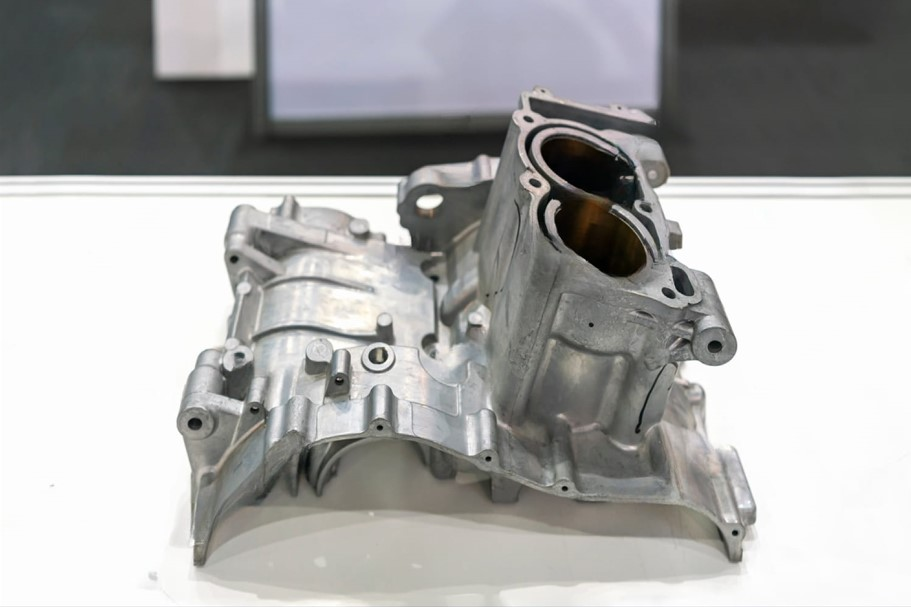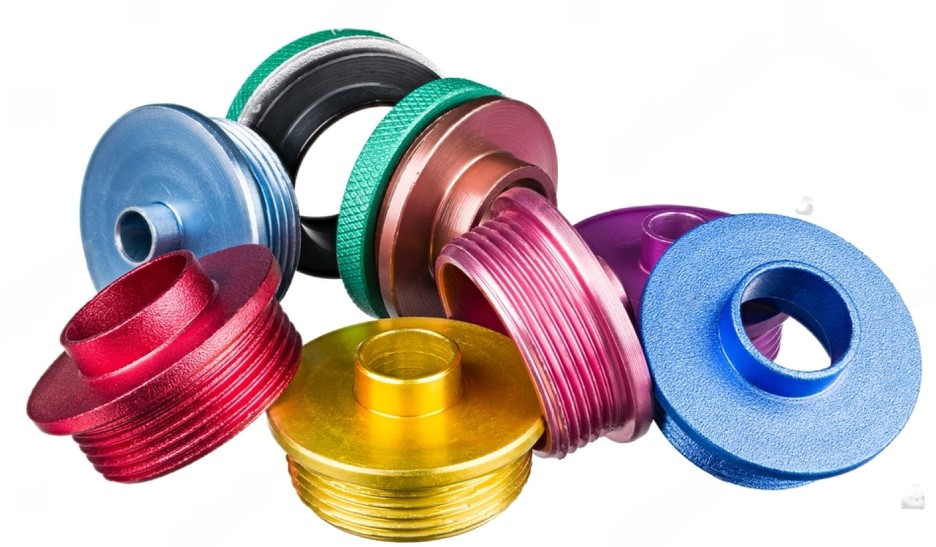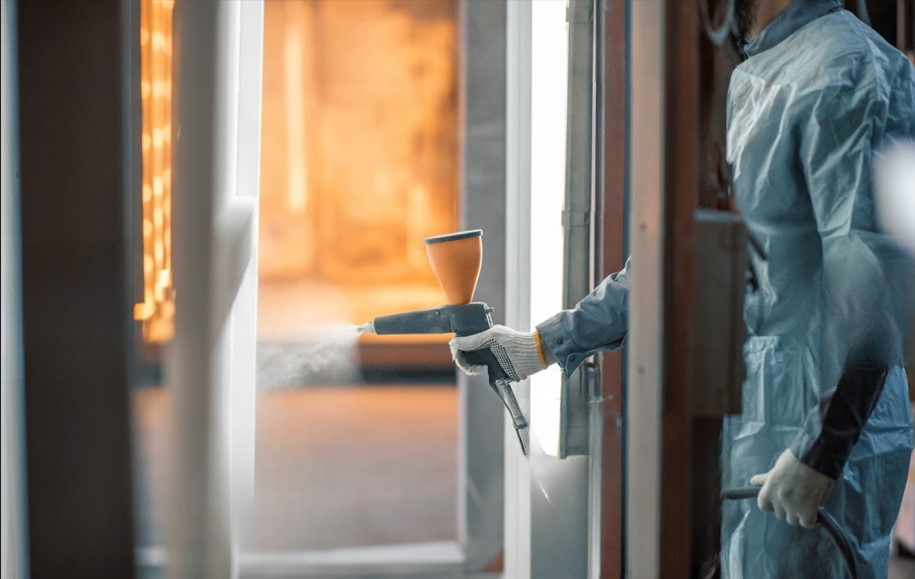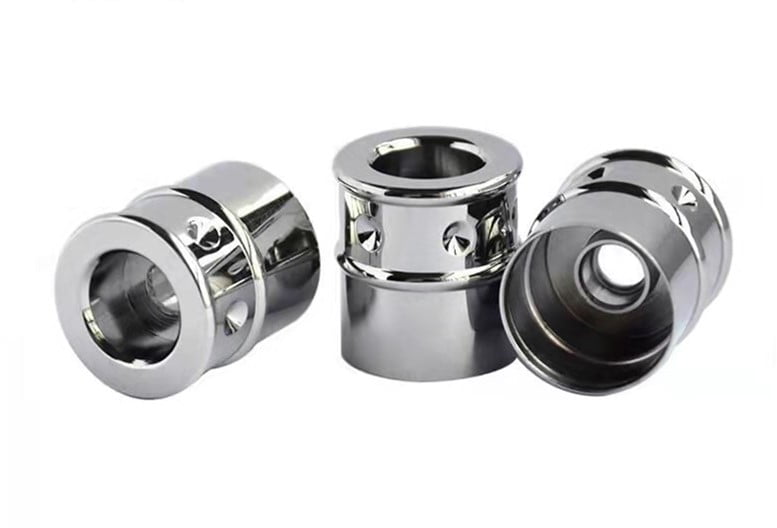The die-casting process is a manufacturing process that involves using a metal mold or die to create complex, high-precision metal parts. The process involves injecting molten metal, typically aluminum alloy or zinc, under high pressure into the die cavity, where it solidifies and shapes the mold.
To improve the die cast part’s performance and wear resistance, subjecting them to a surface treatment process is essential.
Anodizing, powder coating, and electroplating are some of the surface finishing options available for aluminum die castings. Each of these procedures offers a variety of benefits that set it apart from the others and help differentiate it from the others.
By subjecting cast aluminum alloys to surface treatment, industries can ensure that their products are more durable, functional, and has a smooth surface.
Anodizing The Metal Surface for Better Finishing

Anodizing is an electrochemical reaction process used to improve a casting’s surface finish. It involves creating a thin layer of oxide on the surface of an aluminum die-cast part. The process involves placing the part in an electrolytic solution and passing static electricity through it. This causes the die-casting parts to oxidize and create a hard and abrasion-resistant surface.
The die-cast parts requires cleaning to remove any contaminants on the surface. Otherwise, it may have a pure chemical reaction affecting the surface quality. The metal part is then treated to prepare it for anodizing. This typically involves etching the surface with an acidic solution to create a porous surface layer to help the oxide layer form.
An anodized aluminum alloy typically has a sky-blue shade. If desired, the aluminum die-casting surface can be dyed to produce a range of colors for a decorative finish. It involves immersing the part in a dye solution and allowing the dye to be absorbed by the porous oxide layer.
Types of Anodizing

Chromic Acid
Chromic acid anodizing, also known as Type I anodizing, is a surface treatment process that involves creating a thin layer of oxide on the surface of a metal part, typically aluminum. The process uses a chromic acid solution to create the oxide layer, which is typically thinner than the oxide layers produced by other anodizing processes.
However, chromic acid anodizing process can be more difficult to control and produce toxic fumes and waste, making it less environmentally friendly than other anodizing processes.
Sulphuric Acid
Sulfuric acid anodizing, also known as Type II anodizing, is a surface treatment process that involves creating a layer of oxide on the surface of a metal part, typically aluminum.
The thickness of the oxide layer can be controlled by adjusting the concentration of the acid solution, the solution’s temperature, and the process’s duration.
Hard Coating Process
Type III anodizing, also known as hard anodizing, is a subset of sulfuric acid anodizing that creates an oxide coating on the surface of a metal, often aluminum, that is thicker and more wear-resistant.
The hardness of the coating can be further increased by using special additives or post-treating the part with a sealing process. Due to its exceptional hardness, hard coat anodizing is often used as a substitute for other surface treatments, such as hard chrome plating, which can be environmentally hazardous.
Tartaric Sulphuric Acid
Tartaric sulfuric acid anodizing, also known as TSA anodizing or electrolytic coloring, is a type of anodizing process involving a mixture of sulfuric acid and tartaric acid to create a thicker, more uniform and highly corrosion-resistant oxide layer on the surface of aluminum parts.
It is mainly used in aerospace and industrial products where high strength and corrosion resistance are required, and aesthetic appeal is also important.
The process is more complex and requires more control than traditional anodizing processes. The result is a high-quality surface resistance with excellent corrosion resistance and color consistency.
Benefits of Anodizing
Increased Corrosion Resistance
The process of anodizing a metal component results in the formation of a layer of aluminum oxide on the surface of the component. This coating acts as a barrier, preventing further oxidation or corrosion of the metal.
Thicker oxide layers provide better corrosion resistance, offering a more effective barrier to protect the metal from corrosion.
Sulfuric acid anodizing, for example, can be sealed following the anodizing process, which further increases the coating’s resistance to corrosion.
Durability
The oxidation process produces a layer of aluminum oxide tightly bound to the metal surface, forming a hard, durable, and wear-resistant coating. Some anodizing processes, such as hard coat anodizing, produce an even thicker and harder oxide layer, which provides exceptional durability and wear resistance.
Aesthetic Appeal
Some anodizing processes, such as tartaric sulfuric acid anodizing or electrolytic coloring, offer a more comprehensive range of color options, from vibrant shades to subtle pastels.
Anodizing also provides a consistent surface finish, with a uniform oxide coating layer covering the whole part’s surface. This results in a visually pleasing appearance that can add to the overall appeal of the finished product.
Common Mistakes to Avoid in Anodizing
Failure to remove all oils, dirt, and other contaminants from the surface can result in a weak or uneven oxide scale. Proper cleaning and preparation of the metal surface before anodizing is critical to ensure that the oxide layer forms correctly.
Failure to follow the correct parameters can result in a weak or inconsistent oxide layer. The voltage, temperature, and time of anodizing, must be carefully controlled to achieve the desired oxide layer thickness and quality.
Failure to follow the correct parameters can result in a weak or inconsistent oxide layer. Quality control measures, such as inspection, testing, and documentation, are critical to ensure that the finished product meets the desired specifications.
Powder Coating for Aluminum Die Cast

Powder coating is a surface treatment method commonly used for aluminum die castings. It involves applying a dry powder, which is typically made of polyester, epoxy, or a blend of both, onto the surface of the part using a spray gun.
It offers several advantages over surface treatment methods, such as anodizing or painting. It provides a thicker and more even coating, which can better protect the part from corrosion, abrasion, and UV damage.
Types of Powder Coating
Thermoset
Thermoset powder coatings is made from cross-linked polymers that are cured through a chemical reaction during curing.
A dry powder is applied to the surface of the aluminum die castings using an electrostatic spray gun. During this process, the polymers in the coating cross-link to form a strong and durable surface.
Thermoplastic
Thermoplastic powders are made of polymer resins that soften when heated and harden when cooled, without a chemical reaction, like thermoset powders. Unlike thermoset powder coatings, the polymer resins in the coating do not cross-link during the curing process.
Epoxy Powder Coating
Epoxy powder coating is a thermosetting powder coating used for aluminum die casting. Epoxy powder coatings are made from a blend of epoxy resin and hardeners, which undergo a chemical reaction during curing to form a highly durable and impact-resistant coating.
Polyester
Polyester powder coatings are made from a blend of polyester resin and hardeners, which undergo a chemical reaction during curing to form a durable and aesthetically pleasing coating. It offers several advantages over other coating methods, including excellent resistance to UV light, weathering, and corrosion.
Advantages of Powder Coating
Efficiency
Powder coating is a faster and more efficient process than traditional wet painting methods. The dry powder is applied using an electrostatic spray gun, which charges the particles and causes them to adhere evenly to the surface of the aluminum die-casting. This eliminates the need for time-consuming preparation steps like masking and sanding.
It is a more environmentally friendly process than traditional wet painting methods. It does not require solvents or VOCs (volatile organic compounds), which can harm workers and the environment.
Cost-Effective
The thermosetting powders used in powder coating cure at high temperatures, resulting in a hard, durable, and impact-resistant coating that is less prone to chipping, scratching, and fading. This reduces the need for frequent touch-ups or recoating, which can save on material and labor costs over time.
Coverage
The dry powder has a high transfer efficiency, which means that a high percentage of the powder is deposited onto the part’s surface, reducing the amount of overspray and waste.
Powder coating can help to optimize coverage and protection by applying multiple layers, creating textured or matte finishes, and adding features like UV resistance, chemical resistance, and electrical conductivity.
Common Mistakes to Avoid in Powder Coating
Variations in the film thickness can be caused by uneven application of the powder coating. It may result in an uneven finish or a reduction in durability. Proper equipment and application procedures can assist achieve uniform coverage.
Grounding is essential to ensure proper adhesion of the powder coating. If the part is not grounded correctly, the powder coating may not adhere properly, resulting in an uneven finish or adhesion problems.
Electroplating Process for Aluminum Casting
Electroplating can be used for aluminum castings. However, aluminum is a non-ferrous metal and requires a different process than ferrous metals like iron and steel. It involves using a different electrolyte solution and anodes designed explicitly for aluminum.
One of the challenges with electroplating aluminum is that it is a very reactive metal and can quickly form a natural oxide layer that can prevent the adhesion of the plating material. To overcome this, the aluminum surface must be pre-treated with a chemical etch or other surface preparation techniques to remove the oxide layer and improve adhesion.


